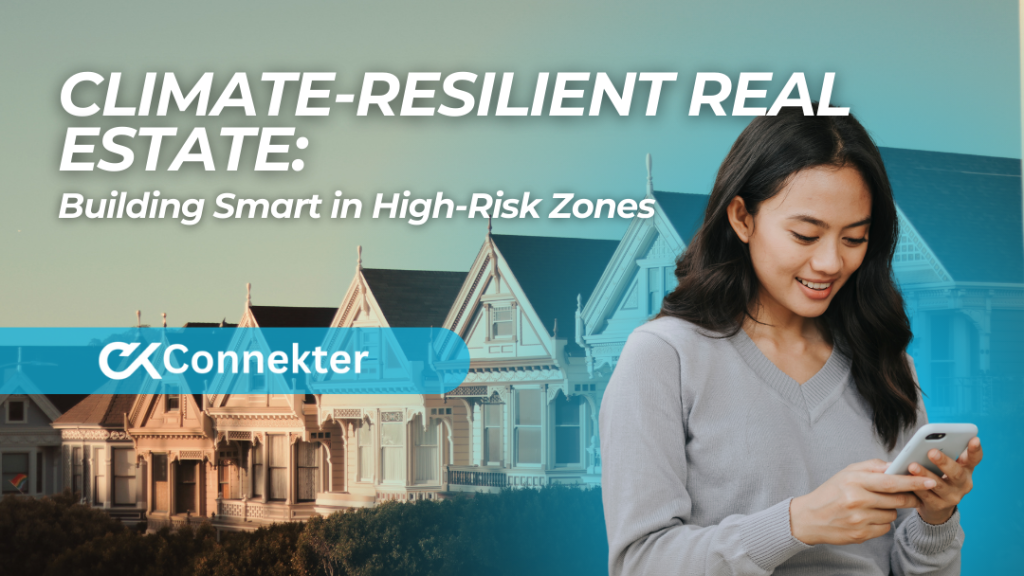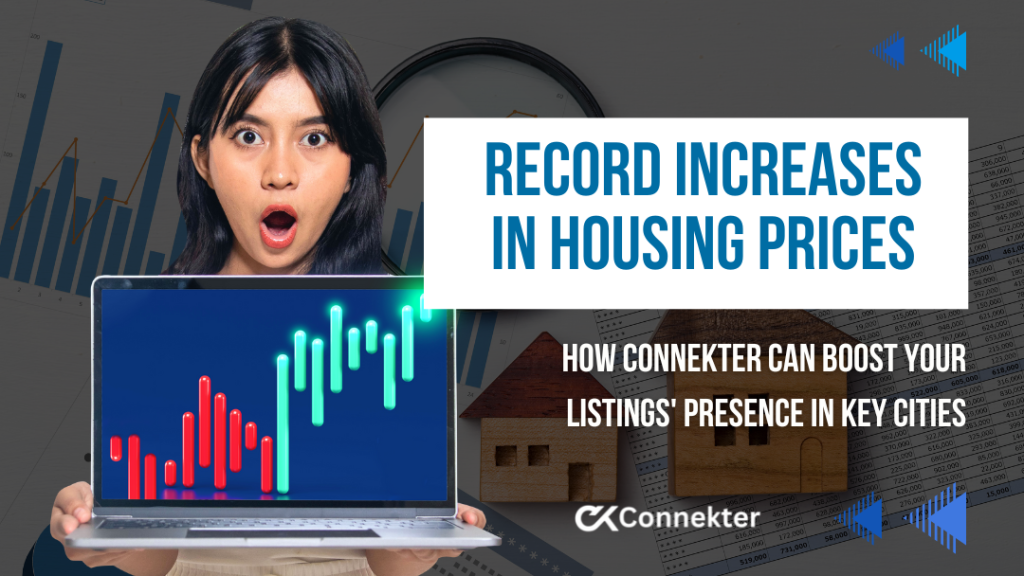
What’s happening to the real estate market in damaged and high-risk areas? How can developers and investors balance growth with resilience?
The issue is fraught. The truth is that, as climate change intensifies, so do the risks associated with building in high-risk areas. We’re talking about coastal regions vulnerable to hurricanes, wildfire-prone areas, floodplains, and seismic hotspots.
However, demand for real estate in these locations remains strong. In some ways, it’s driven by economic opportunities, picturesque landscapes, and lifestyle preferences. Given all this, many other questions arise. And here we aim to elucidate some of the answers, based on our expert judgment and opinion.
Why Climate-Resilient Real Estate Matters More Than Ever
As climate change continues accelerating, the demand for climate-resilient real estate is on the rise. Homebuyers, investors, and developers are increasingly looking for properties that can withstand hurricanes, wildfires, floods, and earthquakes. See more…
More than 80% of home shoppers consider climate risks when looking for a new home. Still, many high-risk areas remain desirable and often have higher home values. Of homes with extreme flood risk — a risk score of 9 or 10 — listed for sale in June 2024, the median list price was 22% higher than for homes with minor risk scores of 1 or 2. The median list price for homes with extreme fire risk was 49% higher than homes with minor fire risk. Homes with extreme flood risk are worth just under $2 trillion nationwide, and homes with extreme fire risk are worth a total of $447 billion. Read more here…
A new study has revealed a harrowing reality: trillions of dollars in U.S. residential real estate are at serious risk of destruction due to a dangerous trifecta of disasters worsened by increasing global temperatures: wildfires, floods, and extreme wind.
As these extreme weather events intensify, millions of homeowners could face financial and emotional turmoil — on top of the increasing difficulty of selling properties in high-risk zones. Read more…
Developing in high-risk zones requires strategic planning, resilient construction, and access to expert guidance. Theoretically, it’s not difficult to propose, but… is it all that simple? Of course not. There are difficulties. More than one drawback that threatens the stable development of real estate. What are these drawbacks?
The Key Challenges of Climate-Resilient Real Estate
1. Rising Sea Levels and Coastal Erosion
Coastal cities like Miami and New Orleans are particularly vulnerable to rising sea levels and storm surges, making climate-resilient real estate a top priority in these regions. Read more…
2. Wildfire-Prone Areas
Regions in California, Colorado, and Texas have seen devastating wildfires, increasing the need for fire-resistant climate-resilient real estate.
3. Floodplain Development and Urban Drainage Issues
Flooding remains a major risk for cities like Houston and Charleston, requiring innovative flood management solutions for real estate developments.
4. Seismic Vulnerability in Earthquake Zones
On the West Coast, cities like Los Angeles and San Francisco require earthquake-resistant climate-resilient real estate solutions.
How Climate-Resilient Real Estate Can Reduce Risk
For real estate professionals, climate resilience isn’t just a trend—it’s a necessity. Here’s how developers and investors can build safer, more sustainable properties in wildfire-prone regions:
1. Fire-Resistant Construction Materials
Switching to non-combustible materials like concrete, metal roofing, and fire-resistant siding can drastically reduce fire damage.
Example: Homes built to California’s Wildland-Urban Interface (WUI) standards have a much higher survival rate during wildfires.
2. Smart Zoning & Land Management
Local governments must enforce stricter zoning laws to prevent high-density construction in fire-prone areas. Developers should prioritize low-risk locations and integrate buffer zones between homes and vegetation.
3. Defensive Landscaping & Firebreaks
Creating defensible space around homes—such as gravel pathways, trimmed vegetation, and fire-resistant plantings—helps slow fire spread.
Example: Communities implementing firebreaks and controlled burns have shown greater resilience in past wildfire seasons.
4. Off-Grid Energy & Water Reserves
During wildfires, power outages and water shortages can hinder firefighting efforts. Sustainable real estate developments should include:
- Solar panels with battery backup
- On-site water storage for emergency use
- Fireproof ventilation systems
These solutions are aimed at prevention. Initially, they were. But the issue of resilience in real estate is much more complex. We would need to analyze other factors. What happens next? For example, with the affected areas? Is it possible to stabilize the market after a disaster? Can the stability of the California real estate market be considered after the fires?
Recent Wildfires: A Wake-Up Call for Real Estate
Let’s review: In the past few years, wildfires in California (read more here), Oregon, and Washington have burned millions of acres, devastating entire communities. The 2023 Maui wildfires in Hawaii further demonstrated how quickly fire can consume poorly prepared areas. These disasters reveal the vulnerabilities in traditional construction and urban planning:
- Homes built with flammable materials are easy fuel for fast-moving fires.
- Poor zoning regulations have allowed development in high-risk fire corridors.
- Inadequate firebreaks and emergency infrastructure have left communities exposed.
So let’s extrapolate this to the economy. Beyond the immediate destruction, wildfires have long-term effects on the real estate industry:
Climate-Resilient Real Estate: Economic Impact on Real Estate Markets
- Rising Insurance Costs – Many homeowners in wildfire-prone areas struggle to obtain or afford property insurance, with some companies pulling out of high-risk markets entirely.
- Decreased Property Values – Even homes that survive wildfires see declining market value due to increased risks and insurance challenges.
- Tighter Building Regulations – Stricter state and federal codes now require fire-resistant materials, defensible space, and safer urban planning.
Austin Perez, a senior policy advisor at the National Association of Realtors suggests updating or adjusting building codes to mitigate risk and lower lost costs.
“Real estate markets work well when you have a closing with a buyer and a seller and they understand the cost and there is nothing hidden,” he said. “It’s difficult for a home buyer to understand the loss to the property, so insurance cost risk isn’t translating into the sales process. People need to see the full risk rate.” See more…
Are the above solutions sufficient to build a secure market? No, but with this more general approach, we find and propose some useful practices.
Building Climate-Resilient Real Estate: Best Practices
To thrive in high-risk zones, developers must focus on climate-resilient real estate strategies that enhance safety and sustainability.
1. Smart Site Selection
Choosing the right location is the first step in climate-resilient real estate development. Connekter connects developers with zoning experts, environmental consultants, and engineers to assess risk levels.
2. Resilient Construction Materials & Building Codes
Investing in hurricane-rated windows, fire-resistant siding, and elevated foundations makes properties safer and more valuable.
3. Sustainable Infrastructure Investments
Governments and private developers must work together to build seawalls, firebreaks, and green infrastructure that enhance the resilience of entire communities.
4. Financial Safeguards & Insurance
Properties in high-risk zones require specialized flood, fire, and earthquake insurance. Connekter helps real estate professionals connect with insurance brokers who specialize in climate-resilient real estate protection. Read more here…
5. Policy and regulation
Developers must engage with local governments, policymakers, and communities to ensure long-term resilience.
While sustainable upgrades are a big part of climate-proofing our buildings, they’re not the whole story.
Governments at all levels need to be incentivizing sustainable upgrades. This can include things like tax breaks, rebates, and even grants. The goal is to make these upgrades more affordable and more accessible. But here’s the thing: these policies need to be designed carefully. They need to be targeted at the right people and the right buildings. Otherwise, they risk being ineffective or even counterproductive.
Regulations also have a role to play. Governments need to be setting standards for things like energy efficiency, water usage, and even flood resistance. These standards need to be ambitious but achievable, pushing builders and developers to do better without pushing them too far. I’m not saying it’s an easy balance to strike, but it’s a necessary one.
6. Community Engagement and Education
Community engagement is also crucial. People need to be involved in the decision-making process. They need to have a say in how their communities are adapted to climate change. This can involve things like community consultations, public hearings, and even participatory budgeting.
But let’s be real, this isn’t always easy. It can be time-consuming, it can be messy, and it can be contentious. But ultimately, I think it’s worth it. Because at the end of the day, climate change affects us all. And we all need to be part of the solution.
It gets more interesting… What if, in the midst of all this, there were real solutions and facilities from lead generation? Connekter is making a difference despite this chaos.
How Connekter Can Help Build Climate-Resilient Real Estate
Climate change is transforming the real estate market, making it more challenging to develop, invest in, and purchase properties in high-risk zones. Whether it’s wildfires in California, hurricanes in Florida, or rising sea levels on the East Coast, property owners and developers must rethink how they build and protect their assets. Learn more…
Connekter: Your Go-To Platform for Climate-Resilient Real Estate
Connekter is more than just a lead generation platform—it’s a strategic tool that connects real estate professionals with the right experts to navigate climate risks. Here’s how Connekter can help:
1. Helping Investors Identify Future-Proof Properties
Real estate investors need to make informed decisions when buying in climate-sensitive regions. Through Connekter, investors can:
- Access climate risk analysts who assess long-term property viability.
- Connect with developers prioritizing resilient construction to ensure investment security.
- Find insurers specializing in high-risk real estate, reducing financial uncertainty.
2. Guiding Homebuyers Toward Safer, Sustainable Homes
For homebuyers, purchasing a property in a high-risk area can be overwhelming. Connekter simplifies the process by helping buyers:
- Find real estate agents knowledgeable in climate-resilient properties.
- Access inspectors trained to evaluate fire, flood, and storm risks.
- Locate homes built to WUI (Wildland-Urban Interface) and FEMA flood-proofing standards.
3. Providing Access to Insurance and Financial Planning
Climate risk has made insurance coverage more complex and costly. Connekter helps users:
- Find insurance brokers who specialize in high-risk property coverage.
- Connect with financial advisors who guide investment decisions in climate-sensitive areas.
- Discover government-backed programs and tax incentives for sustainable real estate.
So, do you already know how to create a plan tailored to your real estate needs?
Climate-Resilient Real Estate: Future-Proof Your Real Estate Decisions with Connekter
As climate change continues to reshape the housing market, real estate professionals, investors, and homebuyers must adapt. Connekter bridges the gap between those seeking climate-resilient properties and the experts who can make it happen.
- Develop smarter.
- Invest wisely.
- Buy safer.
The future of real estate is shifting. Buyers, developers, and investors who fail to adapt to climate risks will face depreciating property values, skyrocketing insurance costs, and even total property loss.
Connekter is your go-to platform for accessing a trusted network of professionals specializing in climate-resilient real estate.
By using Connekter, you’re not just finding leads—you’re connecting with the future of real estate. Whether you’re developing a fire-resistant community, investing in hurricane-proof condos, or buying a sustainable home, Connekter helps you make informed, strategic decisions in an era of climate uncertainty.
With climate change reshaping the real estate industry, climate-resilient real estate is no longer optional—it’s essential. By prioritizing sustainability, durability, and smart planning, developers and investors can create properties that stand the test of time.
Are you ready to invest in climate-resilient real estate?
Join Connekter today and connect with the experts who can help you build smarter, safer, and stronger properties in high-risk zones.
Extra resources:
- 8 Strategies for Future-Proofing Your Real Estate Portfolio Against Climate Change. Read more…
- Why is America still building houses in climate danger zones? Read more here…
- Why HNWIs Are Increasing Their Real Estate Holdings In 2025. Read more…
- Why is America still building houses in climate danger zones? Learn more…
- Green Homes and Sustainable Real Estate in 2025. Read more…
- Record Increases in Housing Prices. See more…
- Why Connekter is the Top Lead Generation Platform. Learn more…

